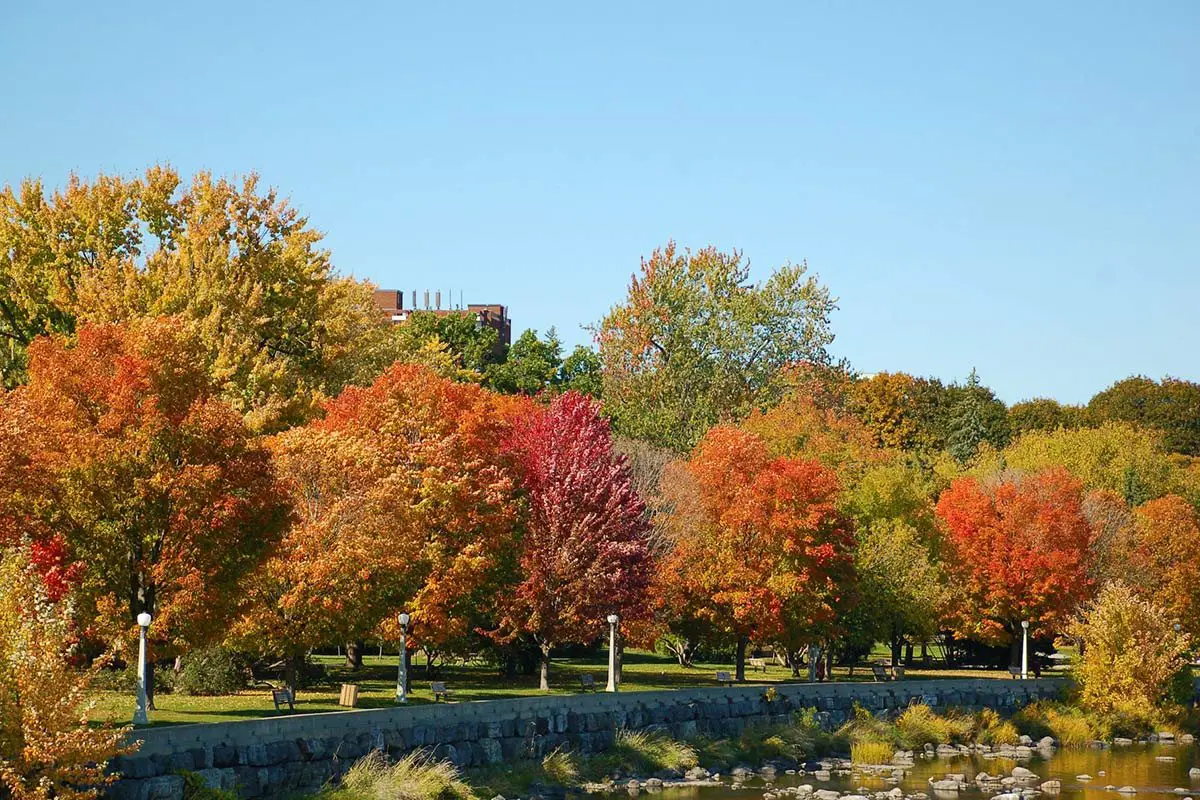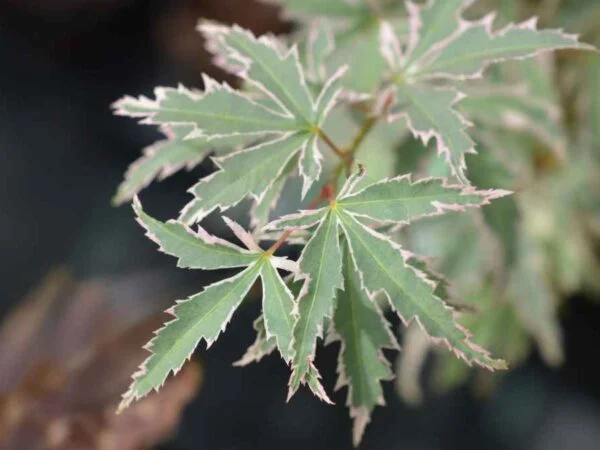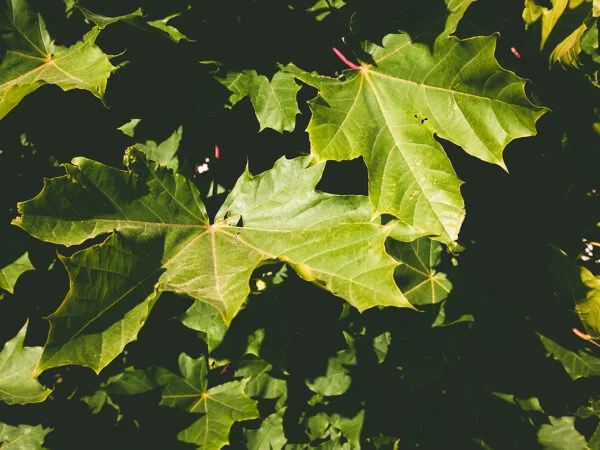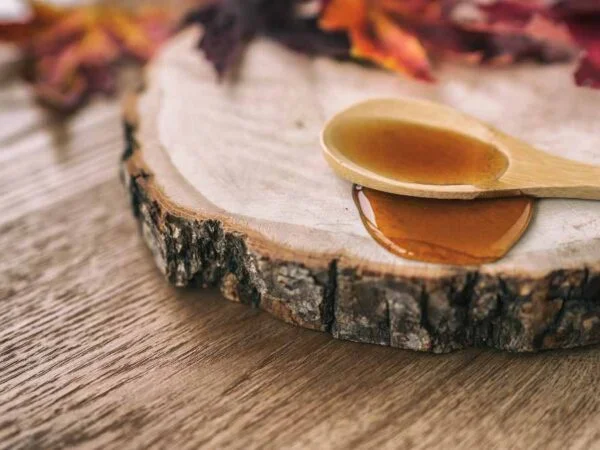Looking to unlock the secret of vibrant maple trees? Wondering how to fertilize them for maximum growth? Well, you've come to the right place! Fertilizing your maple trees is crucial for their overall health and vitality. It's like giving them a power-packed boost of nutrients that they crave. But why bother with fertilization, you ask?
Because it ensures your maples stay strong, resilient, and disease-resistant. By understanding the role of nutrients in their development, you'll be able to provide precisely what they need. However, before diving into fertilization, there are a few factors you should consider. So let's cut to the chase and explore how to unleash the full potential of your beloved maple trees!
Fertilizing maple trees can be a game-changer in transforming lackluster foliage into an awe-inspiring canopy that commands attention. With proper nourishment, these majestic beauties will thrive and become a prideful addition to your landscape.
But where do we start? Understanding the importance of fertilization is key - it's like giving your maples a VIP pass to optimal growth. By providing essential nutrients at the right time and in the right amounts, you're setting them up for success. So get ready as we delve into the fascinating world of fertilizing maple trees and embark on this journey together!
Best Fertilizer for Japanese Maple Trees
Japanese maple trees are known for their stunning beauty and delicate foliage. To keep these trees healthy and thriving, it is essential to provide them with the right nutrients. Choosing the best fertilizer for Japanese maple trees can significantly impact their growth and overall appearance.
Choosing a fertilizer with balanced NPK ratio for Japanese maples
Finding a fertilizer with a balanced NPK ratio is crucial. The NPK ratio represents the proportion of nitrogen (N), phosphorus (P), and potassium (K) in the fertilizer. Each nutrient plays a vital role in supporting different aspects of plant growth.
For Japanese maples, a balanced NPK ratio such as 10-10-10 or 14-14-14 works well. This ensures that the tree receives equal amounts of nitrogen for leaf development, phosphorus for root growth, and potassium for overall health.
Organic vs. synthetic fertilizers for Japanese maple trees
Deciding between organic and synthetic fertilizers is often a matter of personal preference. Both options have their advantages and considerations.
Organic fertilizers are derived from natural sources like composted manure or fish emulsion. They release nutrients slowly over time as they break down, providing long-term nourishment without risking chemical burns or excessive nutrient uptake.
On the other hand, synthetic fertilizers are manufactured chemically to provide precise nutrient ratios quickly. These fertilizers can be more convenient to use but require careful application to avoid burning or damaging the tree's roots.
Recommended brands and types of fertilizer specifically formulated for Japanese maples
Several brands specialize in producing fertilizers specifically formulated for Japanese maple trees. These products are designed to meet the unique nutritional needs of these delicate trees, ensuring optimal growth and vibrant foliage.
Some recommended brands for Japanese maple tree fertilizers include:
- Espoma Holly-tone
- Jobe's Organics Tree Fertilizer Spikes
- Dr. Earth Organic 5 Fertilizer
These brands offer a range of options, including granular fertilizers, liquid concentrates, and slow-release spikes. Choose a product that suits your preferences and follow the manufacturer's instructions for application.
Considering slow-release fertilizers for long-term nourishment
Slow-release fertilizers provide a consistent supply of nutrients to Japanese maple trees over an extended period. These fertilizers come in various forms, such as pellets or coated granules, which gradually release nutrients into the soil as they break down.
Using slow-release fertilizers ensures that your Japanese maple receives a steady supply of essential nutrients without the risk of over-fertilization or nutrient leaching. This approach promotes healthy growth and reduces the frequency of fertilizer applications.
When and How to Fertilize Japanese Maple Trees
Japanese maple trees are known for their stunning foliage and graceful appearance. To ensure that your maple tree remains healthy and vibrant, proper fertilization is essential.
Timing the application of fertilizer based on seasonal changes and growth patterns
Timing is everything. It's important to understand the seasonal changes and growth patterns of these trees to determine the optimal time for fertilization. Typically, it's best to fertilize in early spring before new growth begins or in late fall after leaves have dropped. This allows the tree to absorb nutrients effectively during periods of active growth.
Applying fertilizer evenly around the drip line of the tree canopy
When applying fertilizer to your Japanese maple tree, it's crucial to distribute it evenly around the drip line of the tree canopy. The drip line refers to an imaginary circle formed by extending the outermost branches down to the ground. This area is where most of the feeder roots are located, making it ideal for nutrient absorption. Using a handheld spreader or broadcasting by hand can help ensure even distribution.
Avoiding over-fertilization by following recommended dosage instructions
While providing necessary nutrients is important, over-fertilizing can harm your Japanese maple tree rather than benefitting it. Always follow recommended dosage instructions provided on the fertilizer packaging. Over-fertilization can lead to excessive leaf growth at the expense of root development or cause nutrient imbalances in the soil. It's better to err on the side of caution and apply less than too much.
Watering thoroughly after applying fertilizer to enhance absorption
After applying fertilizer around your Japanese maple tree's drip line, be sure to water thoroughly. Water helps dissolve and carry nutrients into the soil, making them readily available to the tree's roots. Aim to water deeply, ensuring that the soil is moistened to a depth of at least 6 inches. This will enhance nutrient absorption and prevent potential fertilizer burn.
Proper fertilization is vital for maintaining the health and beauty of your Japanese maple tree. By timing your application based on seasonal changes, applying fertilizer evenly around the drip line, following recommended dosage instructions, and watering thoroughly afterward, you can provide your tree with the nutrients it needs to thrive. Remember, a well-fertilized Japanese maple tree will reward you with vibrant foliage and a stunning addition to your landscape.
Fertilizing Newly Planted Maple Trees
There are a few key points to keep in mind. By following these guidelines, you can ensure that your maples receive the nutrients they need for healthy growth and development.
Delaying initial fertilization until the second growing season after planting
It may be tempting to start fertilizing your newly planted maple trees right away, but it's best to exercise patience. To give the young trees a chance to establish their root systems first, it is recommended to delay the initial fertilization until the second growing season after planting. This allows the maples to focus on developing strong roots before diverting energy towards foliage growth.
Using a starter fertilizer high in phosphorus to promote root development in newly planted maples
When the time comes for that first round of fertilizer, opt for a starter fertilizer that is high in phosphorus. Phosphorus plays a crucial role in promoting root development, which is particularly important for newly planted maples. Look for a fertilizer with an NPK ratio of 10-20-10 or similar, as this indicates higher phosphorus content relative to nitrogen and potassium.
Adjusting fertilizer application rates based on soil conditions and tree size
One size does not fit all. The amount of fertilizer needed will depend on various factors such as soil conditions and tree size. For example:
- Sandy soils tend to drain quickly and may require more frequent applications of smaller amounts.
- Clay soils retain moisture better but can become compacted, necessitating careful monitoring of nutrient levels.
- Younger trees typically require less fertilizer than older ones due to their smaller size and lower nutrient demands.
To determine the appropriate application rate for your specific situation, consider conducting a soil test or consulting with an arborist who specializes in tree care.
Monitoring soil moisture levels before and after fertilization
Before applying fertilizer, it's important to assess the moisture levels in the soil. If the soil is too dry, the nutrients may not be readily available for uptake by the tree roots. Conversely, if the soil is overly saturated, it can lead to nutrient leaching and potential root rot.
To ensure optimal conditions for fertilization, check the soil moisture levels by inserting a finger or a soil moisture meter into the ground. If it feels slightly moist about 2-3 inches below the surface, it is generally safe to proceed with fertilizing. After application, monitor the soil moisture regularly to avoid over or under-watering.
All-Natural Fertilizers for Maple Trees
Maple trees are a beautiful addition to any landscape, but they require proper care and nourishment to thrive.Opting for all-natural options can provide them with the nutrients they need while minimizing the use of harsh chemicals.
Exploring Organic Options
One of the best ways to nourish your maple trees naturally is by using organic materials such as compost, manure, or bone meal. These options not only provide essential nutrients but also improve soil structure and promote microbial activity. Compost is rich in organic matter and releases nutrients slowly over time, ensuring long-lasting benefits for your maple trees. Manure from animals like cows or chickens is another excellent choice as it contains high levels of nitrogen, phosphorus, and potassium – essential elements for healthy tree growth. Bone meal is a natural source of phosphorus that aids in root development and overall tree health.
Homemade Compost Tea
Another effective method to feed your maple trees naturally is by utilizing homemade compost tea. This nutrient-rich liquid feed is created by steeping compost in water and allowing it to ferment for several days. The result is a potent brew that can be applied directly to the soil around your maple trees or sprayed on their leaves. Compost tea provides an instant boost of nutrients while also introducing beneficial microorganisms that enhance soil fertility.
Seaweed Extracts and Fish Emulsion
Seaweed extracts and fish emulsion are widely used as natural fertilizers due to their high nutrient content. Seaweed extracts contain trace elements such as iron, zinc, and magnesium that are vital for proper tree growth. They also act as biostimulants, improving root development and increasing resistance to diseases and pests. Fish emulsion, on the other hand, is derived from fish waste and provides a rich source of nitrogen, phosphorus, and potassium. These nutrients are readily available to maple trees, promoting vigorous growth and vibrant foliage.
Coffee Grounds and Wood Ash
If you're looking for supplemental organic amendments for your maple trees, coffee grounds and wood ash can be excellent choices. Coffee grounds are rich in nitrogen, making them ideal for boosting leafy growth. They also improve soil drainage and help retain moisture – two factors crucial for the health of your maple trees. Wood ash, obtained from burnt wood, is an excellent source of potassium and trace elements like calcium and magnesium. However, it's important to use wood ash sparingly as excessive amounts can raise soil pH levels.
Nitrogen and Phosphorus for Maple Trees
Maple trees are known for their stunning foliage and vibrant colors, but achieving healthy growth requires proper fertilization. Two essential nutrients for maple trees are nitrogen and phosphorus.
Understanding the Importance of Nitrogen in Leafy Growth and Overall Vigor
Nitrogen plays a crucial role in promoting leafy growth and overall vigor in maple trees. This vital nutrient is responsible for the production of chlorophyll, which gives leaves their green color and enables them to convert sunlight into energy through photosynthesis. Without an adequate supply of nitrogen, maple trees may exhibit stunted growth, pale or yellowing leaves, and reduced overall health.
To ensure your maple trees thrive with an abundant supply of nitrogen, consider incorporating organic matter into the soil. Compost or well-rotted manure can provide a slow-release source of nitrogen that nourishes the tree over time. Using a balanced fertilizer specifically formulated for maple trees can help maintain optimal nitrogen levels.
Balancing Nitrogen-to-Phosphorus Ratios to Avoid Nutrient Imbalances
Maintaining a proper balance between nitrogen and phosphorus is crucial to avoid nutrient imbalances in maple trees. While both nutrients are essential, an excessive amount of nitrogen relative to phosphorus can lead to imbalances that negatively impact tree health.
To achieve a balanced ratio between these two nutrients, it is recommended to use fertilizers labeled with an N-P-K (nitrogen-phosphorus-potassium) ratio that is suitable for maple trees. A general guideline is to choose a fertilizer with a slightly higher phosphorus content compared to nitrogen.
Identifying Symptoms of Nitrogen Deficiency in Maple Trees
Recognizing the symptoms of nitrogen deficiency is vital for addressing any nutrient imbalances promptly. When maple trees lack sufficient nitrogen, their leaves may turn yellow or pale green. This discoloration typically begins at the tips and edges of the leaves, gradually spreading inward.
In addition to yellowing leaves, other signs of nitrogen deficiency include reduced growth, smaller leaf size, and sparse foliage. If you notice these symptoms in your maple trees, it is crucial to take action by adjusting your fertilization practices to provide an adequate supply of nitrogen.
Ensuring Adequate Phosphorus Levels for Root Development and Flowering
While nitrogen is essential for leafy growth, phosphorus plays a critical role in root development and flowering. Phosphorus promotes strong root systems, enhancing the tree's ability to absorb water and nutrients from the soil. It also supports flower production, ensuring that your maple tree blooms beautifully.
To ensure adequate phosphorus levels for your maple trees, consider using a fertilizer specifically formulated with higher phosphorus content. Applying this type of fertilizer during the early spring or fall can help support root development and maximize flowering potential.
Addressing Phosphorus Deficiency in Maples
Maple trees are known for their vibrant colors and majestic presence, but sometimes they may exhibit signs of phosphorus deficiency. This can manifest as stunted growth or leaves turning purple. To ensure the optimal health and vitality of your maple trees, it is crucial to address this issue promptly.
Recognizing signs of phosphorus deficiency
Identifying the symptoms of phosphorus deficiency is the first step towards rectifying the problem. Stunted growth is a common indicator that your maple tree lacks sufficient phosphorus. If you notice leaves turning purple or displaying an unusual dark hue, it could be another sign of this nutrient deficiency.
Applying phosphorus-rich fertilizers or amendments
To combat phosphorus deficiency effectively, it is essential to provide your maple tree with an adequate supply of this vital nutrient. One way to achieve this is by using fertilizers or amendments that are rich in phosphorus. Look for products specifically formulated for trees with a high phosphorus content.
Here are some examples of fertilizers or amendments you can use:
- Rock phosphate: A natural source of phosphorus that slowly releases nutrients over time.
- Bone meal: Derived from animal bones, bone meal provides an organic and readily available form of phosphorus.
- Triple superphosphate: This fertilizer contains concentrated levels of soluble phosphate that can quickly address deficiencies.
When applying these products, follow the instructions provided on the packaging carefully. Ensure even distribution around the base of the tree while avoiding direct contact with roots.
Adjusting soil pH to optimize phosphorus availability
The pH level of soil plays a significant role in determining nutrient availability for plants. Maple trees thrive best when the soil pH ranges between 6 and 7. If your soil's pH deviates from this range, it may affect the uptake of phosphorus by your maple tree.
To optimize phosphorus availability, you can adjust the soil pH using suitable amendments. For instance, if the pH is too high (alkaline), sulfur or aluminum sulfate can be added to lower it. Conversely, if the pH is too low (acidic), lime or wood ash can be applied to raise it. It is advisable to conduct a soil test beforehand to determine the precise amendments required for your specific soil conditions.
Consulting a professional arborist for accurate diagnosis and treatment recommendations
While recognizing and addressing phosphorus deficiency in maples can be done independently, seeking professional advice from an arborist is highly recommended. Arborists possess specialized knowledge and experience in diagnosing tree health issues accurately. They can evaluate your maple trees thoroughly and provide tailored treatment recommendations based on their findings.
By consulting a professional arborist, you ensure that any potential underlying factors contributing to phosphorus deficiency are identified and addressed effectively. This expert guidance will help you create an optimal fertilization plan and ensure the long-term health of your maple trees.
Boosting Potassium Levels in Maple Trees
Potassium plays a crucial role in the overall health and stress tolerance of maple trees. Understanding its significance and identifying symptoms of potassium deficiency is essential for maintaining the vitality of these majestic trees. By applying potassium-rich fertilizers or supplements, you can enhance the resilience of your maple tree and ensure it thrives for years to come. Considering soil tests before application will help maintain balanced nutrient ratios, optimizing the effectiveness of your fertilization efforts.
The Role of Potassium in Overall Tree Health and Stress Tolerance
Potassium is an essential macronutrient that helps regulate various physiological processes within maple trees. It aids in photosynthesis, promoting the production of energy-rich carbohydrates necessary for growth and development. Potassium also improves water uptake efficiency, allowing trees to withstand drought conditions more effectively.
Furthermore, this vital nutrient enhances disease resistance by strengthening cell walls and improving overall plant structure. By bolstering their defense mechanisms, maple trees can fend off harmful pathogens that may otherwise compromise their health.
Identifying Symptoms of Potassium Deficiency
Recognizing signs of potassium deficiency is crucial for addressing nutrient imbalances promptly. One common symptom is scorched leaf margins—browning or yellowing along the edges of leaves. This occurs as potassium deficiencies hinder water circulation within the tree, leading to cellular damage.
Other indicators include stunted growth, reduced foliage density, and increased susceptibility to pests and diseases. If you notice these symptoms in your maple tree, it's likely time to consider boosting its potassium levels through appropriate fertilization methods.
Applying Potassium-Rich Fertilizers or Supplements
To address potassium deficiencies effectively, applying fertilizers or supplements rich in this vital nutrient is key. There are several options available:
- Potash-based fertilizers: These contain high concentrations of potassium (potash) and are readily available at garden centers.
- Wood ash: A natural source of potassium, wood ash can be sprinkled around the base of the tree to provide a slow-release supply.
- Compost or manure: Organic matter such as compost or well-rotted manure can contribute to overall soil health and indirectly improve potassium availability.
When applying fertilizers, it is crucial to follow the manufacturer's instructions carefully. Over-application can lead to nutrient imbalances and potential harm to your maple tree.
Maintaining Balanced Nutrient Ratios by Considering Soil Tests
Before applying any fertilizers, it is advisable to conduct a soil test. This will help you understand the current nutrient composition of your soil and determine if there are any deficiencies or imbalances that need addressing. Soil tests provide valuable insights into pH levels, nutrient concentrations, and organic matter content.
Based on the results, you can make informed decisions about which fertilizers or supplements are most appropriate for your maple tree. By maintaining balanced nutrient ratios through targeted applications, you ensure optimal growth and vitality while avoiding potential negative impacts on the environment.
Conclusion
To ensure successful fertilization of your maple trees, it's essential to follow these tips:
- Choose the right fertilizer: Select a fertilizer specifically formulated for maple trees, such as one with a balanced NPK ratio.
- Timing is crucial: Fertilize your maple trees in early spring before new growth begins or in late fall after the leaves have dropped.
- Properly fertilize newly planted maples: Apply a slow-release fertilizer when planting young maple trees to provide them with essential nutrients gradually.
- Consider all-natural options: Explore organic fertilizers like compost, fish emulsion, or bone meal to nourish your maple trees naturally.
- Pay attention to nitrogen and phosphorus: These nutrients are vital for healthy growth and vibrant foliage in maple trees.
- Address phosphorus deficiency: If you notice signs of phosphorus deficiency, such as stunted growth or purplish leaves, apply a phosphorus-rich fertilizer or amend the soil accordingly.
- Boost potassium levels: Potassium helps enhance overall tree health and resilience. Use a potassium-rich fertilizer to promote strong root development and disease resistance.
By following these tips, you can ensure that your maple trees receive the proper nourishment they need for optimal growth and beauty.
Remember: Healthy maples not only add aesthetic appeal but also provide shade, improve air quality, and contribute to the overall well-being of your surroundings.
So go ahead and give your maples some love by providing them with the right fertilization regimen!
FAQs: How to Fertilize Maple Trees?
How often should I fertilize my maple tree?
It is generally recommended to fertilize mature maple trees once per year in early spring or late fall.
Can I use regular garden fertilizer on my maple tree?
While regular garden fertilizers may contain beneficial nutrients, it is best to use a specialized fertilizer formulated for maple trees to ensure balanced nutrition.
Is it possible to over-fertilize a maple tree?
Yes, over-fertilizing can harm your maple tree. Always follow the recommended dosage on the fertilizer packaging and avoid excessive applications.
Can I use coffee grounds as fertilizer for my maple tree?
Yes, coffee grounds can be used as an organic fertilizer for maple trees. They provide nitrogen and other nutrients while improving soil structure.
How long does it take to see results after fertilizing my maple tree?
It may take several weeks or even months to see noticeable results after fertilizing your maple tree. Be patient and continue providing proper care for optimal growth.
Remember, each maple tree is unique, so it's essential to observe their specific needs and adjust your fertilization routine accordingly.
Image Source: Paid image from CANVA





